Filmmaking
Filmmaking
-
Parsing DIY Distribution with the CRI Virtual Toolbox
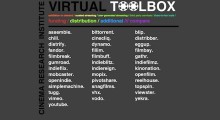
Need to make a snap decision about a crowdfunding or DIY distribution platform? Then check out the Virtual Toolbox from NYU’s Cinema Research Institute. The Cinema Research Institute at NYU Tisch School of the Arts’ Graduate Film Program selects four fellows a year who “engage in the entrepreneurial exploration of the film business and initiate valuable research to be leveraged by the film community at large.” This year’s fellows have explored everything from dynamic pricing models to modeling film investment, but while we wait to learn more about their work, recommended and available online now is the Virtual Toolbox, created […]
-
Malcolm X in Dinesh D’Souza’s America: A Dialectical Double-Feature

Cities with active repertory theaters offer options for constructing cross-town do-it-yourself double-features, and a chance this Sunday to follow Malcolm X at BAMcinématek’s Spike Lee retro with Dinesh D’Souza’s America: Imagine the World Without Her seemed too dialectically productive to pass up. The connecting common component turned out to be a compact Malcolm soundbite (“We don’t see any American Dream. We’ve experienced only the American Nightmare!”), recited by Denzel Washington at the end of a longer peroration in Lee’s opening credits and presented as a stand-alone snippet from the real Malcolm in D’Souza’s film. It’s no surprise America ditches the […]
-
When Independent Film Anticipates An Audience
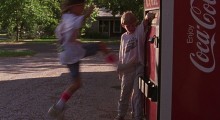
The arrival of summer blockbuster season and another Transformers installment means it’s time for critics to take to their think pieces and argue why Hollywood’s lowbrow, cash cow economy harms the more artful realm of independent film. The New Yorker’s Richard Brody, meanwhile, had the good, iconoclastic sense to pen an article entitled “The Real Threat To Independent Film,” whereby he concludes that the field’s dismantler does not lie within Hollywood, but in independent film itself. “The most audacious low-budget American independent filmmaking,” writes Brody, “is threatened much more significantly by misplaced critical praise for art-house mediocrities than by Hollywood.” […]
-
Jordana Spiro at the Sundance Directors Lab, Part 2
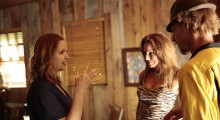
[Jordana Spiro’s first blog post can be found here.] I was directing my last scene for the lab. It was set in a tiny bathroom and the only place to be out of the camera’s view was the small bedroom on the side with the equipment. After the actors finished a take, the bedroom door opened and Robert Redford asked if he could join me and watch for a while. Sure you can, Robert Redford. We settled in together on the twin bed to watch the small monitor as the actors went for another take and then we talked through […]
-
Seeing in the Dark with the Sony a7S
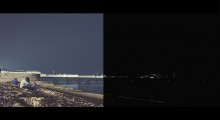
When Sony announced the a7S mirrorless camera at NAB everyone was interested in its 4K capabilities, but it’s the low-light power of this camera that may be the true selling point. With the “S” standing for sensitivity, the a7S is the third a7 camera to be released. The a7 and a7R were announced in October of last year and started shipping in December. Those two models record HD video and stills at much higher resolutions than the a7S; the a7 has a 24.3 megapixel sensor capable of 6,000 x 4,000 pixel stills, while the a7R has a 36.4MP sensor capable […]
-
Richard Linklater’s Five Keys to Filmmaking
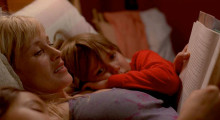
Richard Linklater’s Boyhood arrives in theaters next Friday, and the press blitzkrieg is well underway. In addition to a recent, incisive profile in The New Yorker, a relatively compact piece popped up in Fast Company that offers insight into Linkater’s process. Less practical than theoretical, the article addresses five bastions of great storytelling, according to the consummate independent filmmaker. I’ve excerpted my favorite points below. Find Your Form First “There are a lot of stories in the world, and I spend all my time thinking about how to tell them. That, to me, is the cinematic element. That’s the hard part: the right narrative form […]
-
“What is Bayhem?” The Secret of Michael Bay’s Shots

In the latest in his Every Frame a Painting series, film essayist Tony Zhou breaks down the visual language of the visually dynamic, sometimes-maligned (although not by Filmmaker!) Michael Bay, showing why his shots still pack more punch than your average multiplex-crasher. Using commentary from Werner Herzog, references to West Side Story (one of Bay’s favorite films) and A/B comparisons of imitators interesting and not, Zhou explains Bay’s use of parallax, off-screen space, compression and speed. If you’re planning to see Transformers 4 — or even if you’re not — just check this out.
-
Watch: How to Hack a Lomo Camera Fisheye Lens for a DSLR

Australian artist/filmmaker Max Piantoni has a Lomo camera sitting around that’s not much good for anything these days, but he thought he could reappropriate the fisheye lens for a DSLR to cool ends. So he took a hammer, smashed apart the Lomo, and added the lens to the DSLR. In this video, he explains the relatively simple process and shows off some neat test footage that he took. Yes, Piantoni knows that there’s already a Lomo fisheye lens for DSLRs and no, he doesn’t care. Thanks to our friends at No Film School for the heads-up, and definitely head over […]
-
Johnny Ma at the Sundance Directors Lab, Part 2

[Johnny Ma’s first blog post can be found here.] The day after the Sundance Labs ended, a group of fellows, advisers, and Sundance staff all walked off the plane together at LAX. Instinctively, we kept close to each other as we edged toward baggage claim, as if trying to stay together a little longer before the real world pulled us apart. It felt strangely like reaching land after using sea legs for so long, but the big discovery being that the sea is actually our natural habitat. Walking through the airport, we couldn’t help but look around at the faces […]
-
Watch: The Shadows of Roger Deakins
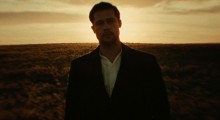
Roger Deakins is widely regarded as one of the industry’s top cinematographers, bringing his characteristic earthen hues to films as divergent as Skyfall and The Assassination of Jesse James by the Coward Robert Ford. He is of course best known for his frequent collaborations with the Coen Brothers (Bruno Delbonnel nicely filled his shoes in Inside Llewyn Davis), and this Plot Point Productions montage, “Roger Deakins: Shadows in the Valley,” makes note of Barton Fink, Fargo, No Country for Old Men, and a little bit of what’s in between. Watch above.
